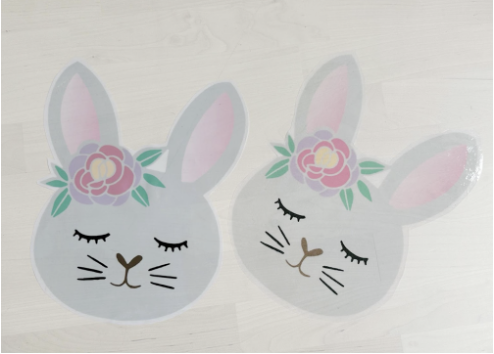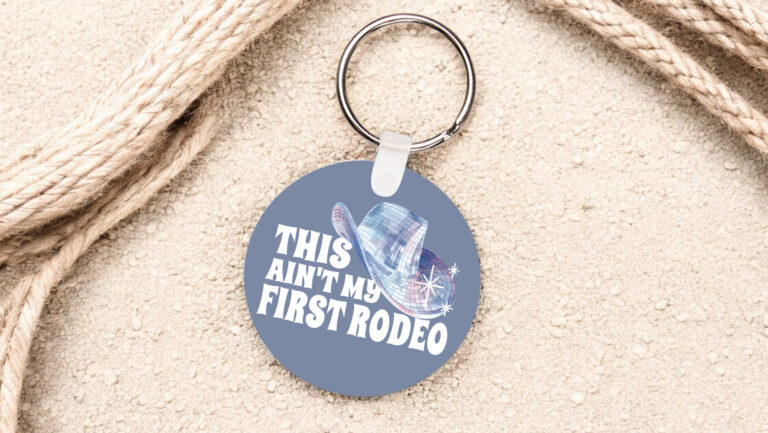
Sublimation paper is a special paper designed to hold and release the ink into gas when exposed to heat. There’s an extra layer on the paper designed just for holding, rather than absorbing, sublimation ink.
The Basics of Sublimation Paper
You should know that sublimation transfer paper is NOT the same as that plain copy paper you might already have in your copier or regular inkjet printer, even though it might look the same at first.
A good sublimation paper has three things:
- The coating can make sure the ink won’t permeate into paper. If the ink permeates into paper, it will waste much of the ink.
- It withstands the high heat of your heat press machine.
- It efficiently releases the dyes into your surface when heated.
Each of these is important for the sublimation process and getting the best results!
There are a lot of different sublimation papers on the market, and you may be wondering what’s best to use and what’s better off avoided in your heat transfer printing projects.
How are Sublimation Papers Different from Each Other?
So what’s the difference between them all? There are lots of general sublimation papers that will work for a variety of surfaces.
The “right side” of sublimation paper is the one that is pure white, without any printing on it. This is the side that you print on. So pay attention that you load your paper the right way into your paper tray. In the main tray of the printer, you’re putting the side you’ll print onto face down.
You often see a number mentioned on the package, which refers to the weight of the paper. Here is an example:
125G in your paper name stands for 125 grams per square meter and it’s the heaviest sublimation paper. The heavier the paper and the thicker the coating, the better it will hold the ink and saturate your surface — if you want full color, vibrant designs, go for the heavier weight.
It also has a very high transfer rate, meaning that most of the sublimation ink will transfer from the paper to the surface. 125g sublimation paper also has a greater durability than the thinner paper and holds up well under the heat press. This heavier paper can also cause issues with rigid and hard surfaces (hard substrate), as the ink has nowhere to go and can blur or ghost — if this happens, you can use a thinner paper.
105G in your paper name is the one hundred and five gram paper, and it’s the lightest sublimation paper. So now you may be wondering why we’d want lighter paper if heavier gives the best and most saturated color. Well, it turns out that light sublimation paper holds a little less ink and this is better when you’re making seamless designs, like our full-color sublimation tumbler. But keep this in mind, the thinner paper is more likely to curl with high temperatures and it doesn’t do as well with heavy ink saturation: this may affect the look, of your surface into dull and faded… so in this case, you could use better the heavier paper to get more ink on it and more ink on your surface.
So WEIGHT of sublimation paper is a big factor. Another factor can be the compatibility of the paper with your printer. For example, TruePix paper is optimized to work with Sawgrass sublimation printers. It’s 120 grams and works on a variety of surfaces.
Why You Need Sublimation Paper
Now, you may have heard of people using regular paper for sublimation, for example laser copy paper. It’s possible to use laser copy paper because it’s formulated to withstand the high heat of your heat press. The question is if inkjet heat transfer paper can hold and release the ink well enough, however.
Some people ask me if you can use photo paper for sublimation: I can say this: photo paper cannot withstand the high temperature of your heat press, so this is a no-go. My experience is, that when you want the best results for your printed products, please stick with the sublimation paper to print on! In some cases, you surely can try copy paper, but make sure you use some butcher paper or a cover sheet to protect your heat press from ink that is bleeding through the paper while pressing….
I did some 100% polyester products with prints made on copy paper and they came out fine, but keep in mind that not all products give good results! Sometimes you just have to play around!

Just a little example to show the difference in printing paper:
I printed the same design, with the same settings on this window sticker: the left one is printed on Texprint R sublimation paper, while the right one is printed on regular laser copy paper.
There truly is a difference in colors!




